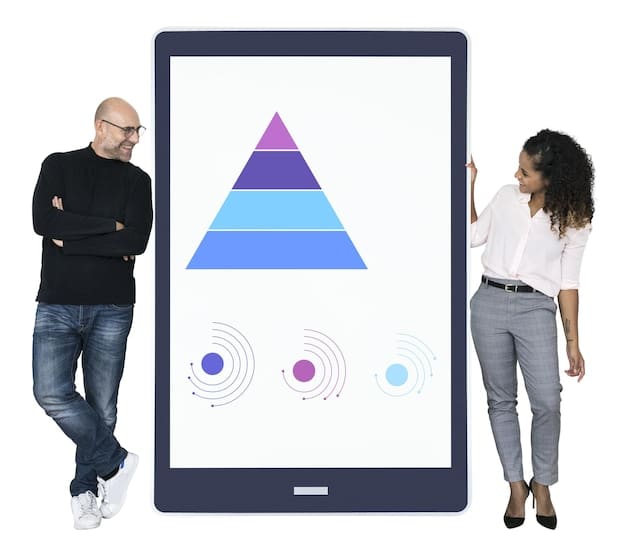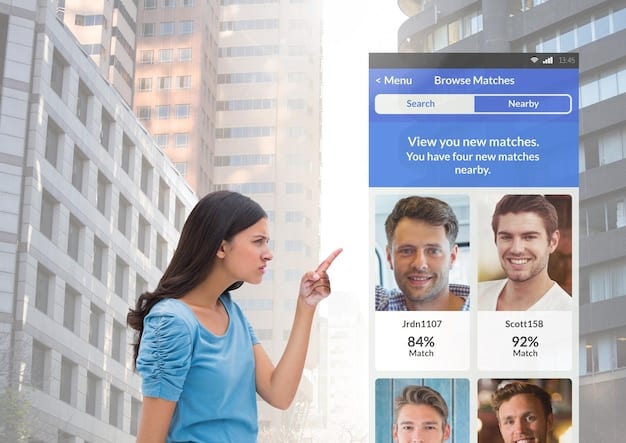Maximize ROI: Optimizing Google Ads Campaigns in the US

Optimizing Google Ads campaigns for maximum ROI in the US involves strategic planning, precise targeting, compelling ad creatives, continuous monitoring, and data-driven adjustments to ensure efficient ad spending and high conversion rates.
Want to get the most out of your Google Ads budget in the US? Optimizing your campaigns is essential for maximizing your return on investment (ROI). Dive in to discover actionable steps for enhancing your ad performance and driving more conversions with paid advertising: how to optimize your Google Ads campaigns for maximum ROI in the US.
Understanding the Fundamentals of Google Ads
Before diving into optimization techniques, it’s crucial to understand the basics of Google Ads. This involves grasping key concepts like campaign structure, ad groups, keywords, and bidding strategies. A solid foundation will enable you to make informed decisions and effectively tailor your campaigns.
Campaign Structure
Organizing your campaigns logically is the first step. Structure your campaigns around your business goals, grouping similar products or services together. This allows for more targeted ad messaging and efficient budget allocation.
Ad Groups and Keywords
Within each campaign, create ad groups that focus on specific themes or products. Select relevant keywords that align with your target audience’s search queries. Use a mix of broad, phrase, and exact match keywords to capture a wider range of searches while maintaining relevance.

- Keyword Research: Use tools like Google Keyword Planner to identify high-volume, low-competition keywords.
- Ad Group Organization: Segment keywords into tightly themed ad groups for better ad relevance.
- Match Types: Utilize broad, phrase, and exact match types to control the reach and precision of your ads.
Understanding these fundamentals forms the backbone of any successful Google Ads campaign, setting the stage for more advanced optimization strategies.
Targeting the Right Audience
Effective targeting ensures your ads are seen by potential customers most likely to convert. Google Ads offers various targeting options, including demographic, geographic, and interest-based targeting. Fine-tuning these settings is key to reaching your ideal audience.
Demographic Targeting
Refine your audience based on age, gender, parental status, and household income. This is particularly useful for products or services geared toward specific demographics.
Geographic Targeting
Focus your ads on specific locations, from countries to cities or even zip codes. This is ideal for businesses that serve local customers or have distinct regional target markets.
Interest-Based Targeting
Reach users based on their interests and habits. Google uses browsing history and online behavior to categorize users into relevant interest groups.

- Detailed Demographics: Layer demographic targeting with detailed demographics for enhanced precision.
- Location Refinement: Use radius targeting to focus on specific areas around your business.
- Custom Audiences: Create custom audiences based on your website data or customer lists for retargeting.
By using precise targeting options, you can optimize your ad spend and increase the likelihood of reaching customers who are genuinely interested in your products or services. This ultimately boosts your ROI.
Crafting Compelling Ad Creatives
Your ad copy is often the first impression potential customers have of your business. It’s crucial to create compelling and relevant ad creatives that grab attention and drive clicks. A well-crafted ad speaks directly to the user’s needs and encourages them to take action.
Headline Optimization
Your headlines should be clear, concise, and attention-grabbing. Include relevant keywords to improve your Quality Score and relevance. Highlight the benefits of your product or service to entice clicks.
Description Lines
Use your description lines to provide more details about your offering. Explain what sets you apart from the competition and include a clear call to action (CTA) that prompts users to click.
Ad Extensions
Enhance your ads with extensions that provide additional information, such as sitelinks, callouts, and structured snippets. These extensions make your ads more visible and informative.
Creating compelling ad creatives ensures that your message resonates with your target audience, improving click-through rates and driving more qualified traffic to your website.
Implementing Effective Bidding Strategies
Your bidding strategy significantly impacts your ad visibility and cost. Google Ads offers various automated and manual bidding options. Selecting the right strategy depends on your campaign goals, budget, and level of expertise.
Automated Bidding
Automated bidding strategies use machine learning to optimize bids based on your campaign goals. Options include Target CPA, Target ROAS, and Maximize Conversions.
Manual Bidding
Manual bidding gives you direct control over your bids. This is suitable for experienced advertisers who want to fine-tune their bids based on performance data.
Bidding Adjustments
Implement bid adjustments based on factors like device, location, and time of day. This allows you to optimize your bids for specific segments of your audience.
- Target CPA: Set a target cost per acquisition and let Google optimize your bids to achieve your goal.
- Maximize Conversions: Automatically adjust bids to get the most conversions within your budget.
- Dayparting: Schedule your ads to run during peak conversion times for better efficiency.
Choosing the right bidding strategies ensures that your ads compete effectively for the right placements, optimizing your budget for maximum ROI.
Tracking and Analyzing Campaign Performance
Continuous monitoring and analysis are essential for identifying areas for improvement. Google Ads provides comprehensive reporting tools that allow you to track key metrics and assess the performance of your campaigns. Regular analysis enables you to make data-driven decisions and optimize your strategies.
Key Performance Indicators (KPIs)
Monitor metrics like click-through rate (CTR), conversion rate, cost per acquisition (CPA), and return on ad spend (ROAS). These KPIs provide insights into the effectiveness of your campaigns.
Google Analytics Integration
Link your Google Ads account with Google Analytics to gain a deeper understanding of user behavior on your website. Track how users interact with your site after clicking on your ads.
A/B Testing
Conduct A/B tests to compare different ad creatives, landing pages, and bidding strategies. This helps you identify the most effective approaches and optimize your campaigns accordingly.
Regular tracking and analysis enable you to identify what’s working and what’s not, allowing you to refine your strategies and improve your overall campaign performance.
Optimizing Landing Pages for Conversions
Your landing page is where users ultimately convert. Optimizing your landing page for a seamless user experience is crucial for maximizing conversions. Ensure your landing page aligns with your ad messaging and provides a clear path to conversion.
Relevance
Ensure your landing page is relevant to the keywords and ad creatives that brought users to the page. This improves the user experience and increases the likelihood of conversion.
User Experience (UX)
Optimize your landing page for a smooth and intuitive user experience. This includes fast loading times, mobile responsiveness, and clear navigation.
Call to Action (CTA)
Include a clear and compelling CTA that prompts users to take the desired action, such as making a purchase, filling out a form, or contacting your business.
- Page Speed: Optimize your landing page for fast loading times to reduce bounce rates.
- Mobile Optimization: Ensure your landing page is mobile-friendly for users on smartphones and tablets.
- Clear Value Proposition: Clearly communicate the benefits of your product or service on your landing page.
Optimizing your landing pages ensures that users have a positive experience and are more likely to convert, maximizing the ROI of your Google Ads campaigns.
| Key Point | Brief Description |
|---|---|
| 🎯 Audience Targeting | Focus on demographics and interests for ad relevance. |
| ✍️ Ad Creatives | Craft compelling headlines and descriptions. |
| 📊 Performance Tracking | Monitor CTR, CPA, and ROAS for optimization. |
| 💰 Bidding Strategies | Implement automated bidding for optimal budget use. |
Frequently Asked Questions
▼
ROI (Return on Investment) measures the profit generated from your Google Ads campaigns compared to the cost. It helps assess campaign efficiency and profitability.
▼
Regular monitoring and optimization are crucial. Review your campaigns weekly to assess performance and make data-driven adjustments for better outcomes.
▼
Ad extensions enhance your ads with additional information, such as sitelinks, callouts, and structured snippets, making your ads more visible and informative.
▼
Improve your Quality Score by ensuring your ads are relevant to your keywords and landing page content. A higher score equals better ad ranking and lower costs.
▼
A/B testing compares different ad creatives, landing pages, and bidding strategies to identify the most effective approaches. This helps optimize your campaigns continuously.
Conclusion
Optimizing your Google Ads campaigns for maximum ROI in the US involves a strategic approach encompassing audience targeting, compelling ad creatives, effective bidding strategies, and continuous performance tracking. By focusing on these key areas, you can efficiently manage your ad spend and drive more conversions, ultimately boosting your return on investment.





